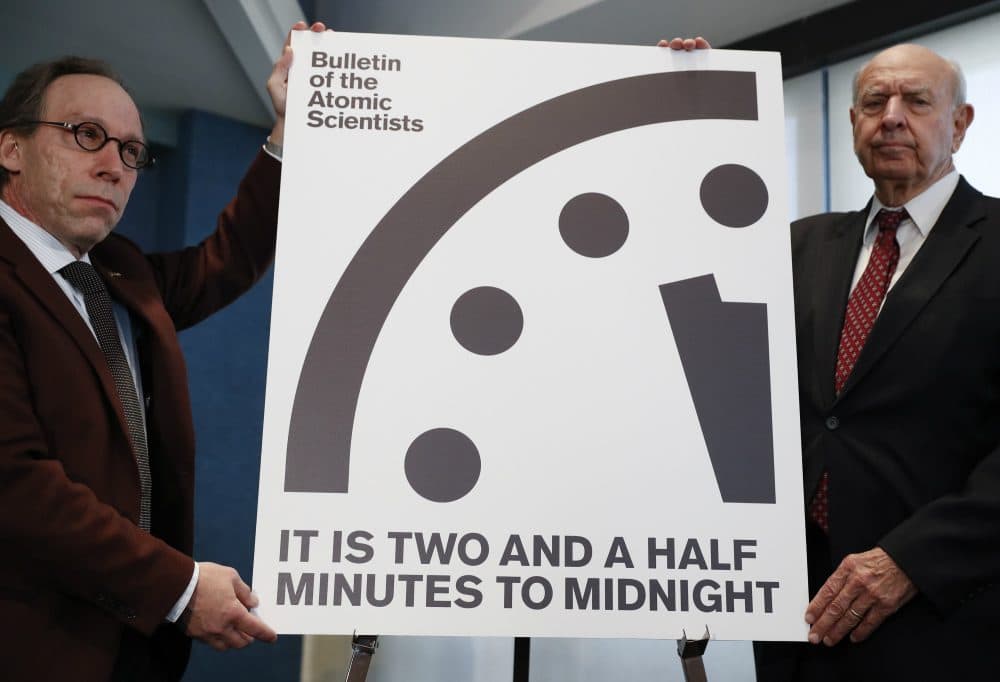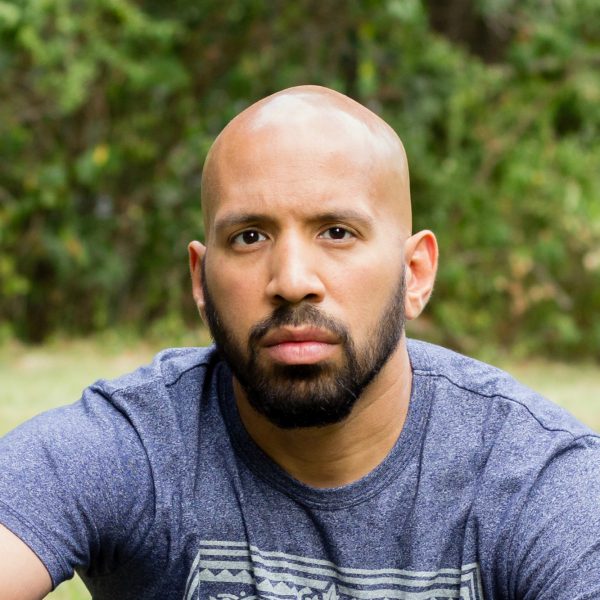Advertisement
Midnight Is Nigh, America. It's Time To Find Common Ground

COMMENTARY
On Thursday, the Bulletin of Atomic Scientists announced that they have moved up the hands of the Doomsday Clock to two and a half minutes to midnight. The conceptual timepiece, originated by a group of scientists involved in the Manhattan project, made its debut in 1947 to serve as a visual representation of our proximity to global disaster. It was initially intended as a symbol of our steady march towards nuclear war, but its meaning has evolved to represent catastrophe wrought by climate change as well. The closer the hands are to midnight, the closer we’re thought to be to our imminent demise. Every so many years, the bulletin reevaluates our condition and adjusts the hands accordingly. It’s been as far away as 17 minutes to midnight, coinciding with the dissolution of the Soviet Union. The Doomsday Clock now reads 11:57:30, the closest it’s been to midnight since 1953.
As I counted the hours until the announcement, I was reminded of the first time I became aware of the clock’s existence. I retrieved Alan Moore’s revolutionary graphic novel "Watchmen" from my bookshelf. Each chapter begins with the Doomsday Clock.
The Doomsday Clock now reads 11:57:30, the closest it’s been to midnight since 1953.
Chapter one. Twelve minutes to midnight.
While the novel and its film adaptation vary somewhat in ending, there is a common theme. The story takes place in an alternate Cold War America, though one not so different from our own. The country has enemies on all sides and is consumed with the fear of nuclear war. One man orchestrates a plot that creates a common enemy, one that destroys the lives of millions, in order to unify the citizens of the planet against this horrific threat to save the lives of billions.
And through this deception, he is successful. Governments turn their weapons of mass destruction away from one another and point them towards a mutual enemy, knowing full well the monstrosity is capable of eliminating them all.
I’ve read the novel countless times. I know the story all too well. Yet on the day of the Doomsday Clock’s change, the parallels are all the more chilling.
While not the machination of a graphic novel villain, our country finds itself faced with the same kind of threat, embodied in the person of Donald Trump. He is not the gargantuan tentacled alien that destroys a major metropolitan city; nor is he a being composed of pure energy capable of nuclear destruction.
Advertisement
Not exactly.
But Trump's actions during his first week in office are evidence enough to make the comparison. The days to come are all but guaranteed to provide us with more. Yet despite the clear and present danger that President Trump presents, his actions are in their infancy. Their full measure has yet to be realized. He distracts us all with swift executive orders that fulfill his campaign promises while waging war with the media; a magician’s sleight of hand to keep our eyes diverted from the greater threats.
He shouts bring jobs back as he places a freeze on federal jobs that will gut the ability to maintain and preserve our national parks.
He shouts repeal and replace while he silences the environmental scientists who would save our planet by informing us of the destruction for which we bear great responsibility.
He shouts build the wall, a wall for which we will pay, while Flint, Michigan, still does not have safe drinking water, while the Standing Rock Sioux and the protesters who support them steel themselves to fight the Dakota Access pipeline. Again.
Midnight is fast approaching.
We’ve been asked to step outside of our bubbles. To remove ourselves from the cacophony of our echo chambers and engage in a dialogue with those whose opinions differ from ours.
We’ve been asked to step outside of our bubbles. To remove ourselves from the cacophony of our echo chambers and engage in a dialogue with those whose opinions differ from ours. Without question, this is a two-way street; it doesn’t work if one side is walking in the other direction. But the road must converge upon a common foe, if those who supported Trump are to come to the realization that the enemy of their enemy is not their friend. That despite the differences between those who voted for him and those who did not, that in the face of a man whose very presence in the highest office of the land defies all logic, that when the man himself defies all reason…we are not enemies, but friends.
But the time is now. Though those who recognize the threat have mobilized, put their feet to the street, put their signs in the air, and lent their voices to the call to resist, there is still more work to be done. In organizing with those who share in our causes, we must begin to forge the bridges of commonality with those who do not. It is not just the country, but the planet, that has a shared enemy. Our survival depends on our ability to see that.
Because the clock is ticking.
This article was originally published on January 27, 2017.
